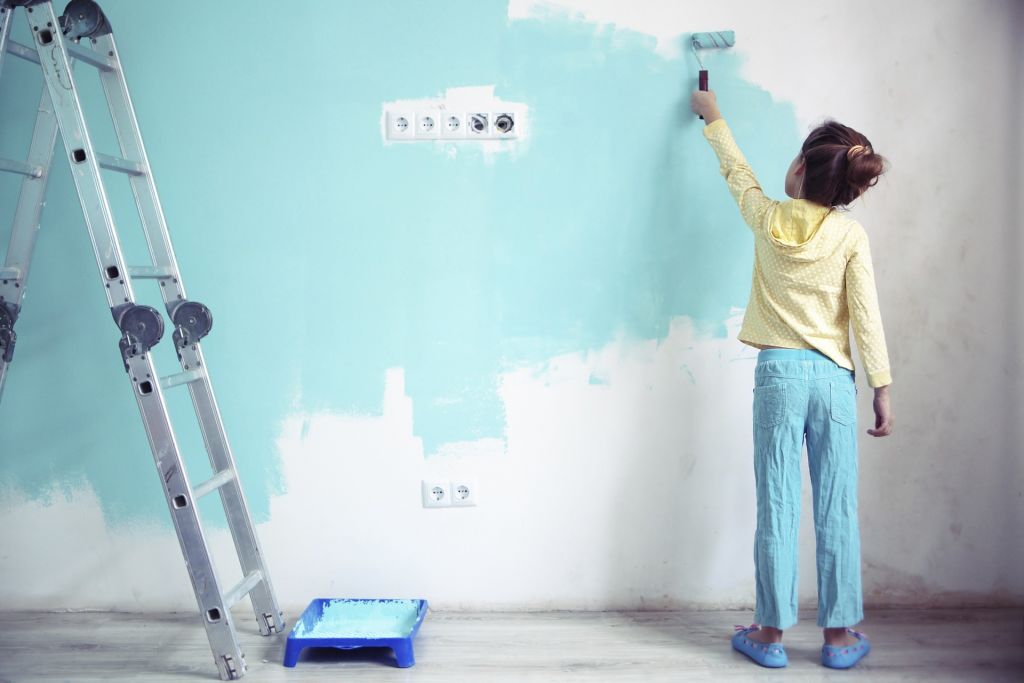Renovation safety plan and survival guide

A DIY home renovation offers a fantastic opportunity to improve your living arrangements, add value to your home and learn new skills. There are few tasks as satisfying as transforming your home, and it can be a rewarding experience to share with others.
Tools, barbecues and beers aside, there are specific safety standards you should follow to keep you and your family safe, and some basic relationship tips to help maintain your and your partner’s sanity! Before you pick up the sledgehammer, read this home renovation safety advice.
Safety 101
In addition to looking out for hazardous building materials, there are some basic safety rules you should follow.
- Electricity and gas: All gas and electrical work needs to be carried out by a certified professional.There will be times when the gas or electricity supply will need to be turned off to ensure a safe working environment, so check your electrical safety switches are in working order.
- Safety gear: Wear appropriate shoes, clothing, eye protection, gloves and breathing masks.
- Trip and hazards: Clean up materials and put away tools as you go. Always disconnect power tools when not in use.
- Containment: Contain waste, fumes and dust residue as well as you can by sealing off parts of the house you’re not renovating and covering the floor with plastic sheets. Pregnant women and children should keep away from the worksite, and neighbours should seal their windows and doors where possible. Eat away from the renovation site, and always wash your hands and face before consuming food.
- Ventilation: Ensure your work space is properly ventilated as fumes and dust can cause illness.
Asbestos
Up to one third of all Australian homes contain asbestos, a building material that can cause serious, even fatal cancer-related illness if not managed correctly. Homes built between 1921 and the mid-1980s are highly likely to contain asbestos – it was even used in homes built right up to 1990.
Asbestos can be safely managed and is not a risk when undisturbed. Pay particular attention to carpet and tile underlays, carports, concrete formwork, expansion joints, fencing, gables, guttering, imitation brick cladding, packing under beams, roof sheeting, sheds, vinyl flooring, wall sheeting, waterproof membrane and zelemite backing boards.
If you suspect there is asbestos, or want to make sure either way, contact your local council or state environmental protection agency. Homeowners (except those in the ACT) can legally remove under 10 square metres of bonded asbestos (bonded means it is mixed with other material such as concrete), but you must take serious precautions. Loosely bound or friable (easily crumbled) asbestos needs to be removed by a professional as fragments are more likely to become airborne. Asbestos can only be disposed of at an authorised landfill site.
For more information on asbestos, head to the Australian Asbestos Network and the Safe Work Australia websites.
Lead paint
Homes built before 1970 commonly have lead-based paint inside and around their perimeter. Lead paint chips or dust can be toxic to humans (especially children under the age of five) and animals, so protect your family and neighbours by being informed.
Lead paint is not a threat unless disturbed, so sanding or scraping old lead paint can be dangerous as it scatters the toxic residue. It is possible to test for the presence of lead paint, and there are safe removal methods, including chemical stripping, wet sanding and containing the paint waste. In most cases, lead paint needs to be removed by a professional who is experienced in the area.
The Australian Government’s Lead Alert: The six step guide to painting your home is an invaluable home renovation guide that contains everything you need to know about removing lead paint.
Saving your relationship
Procrastination, mess and mishaps are probably the greatest relationship stressors during a DIY renovation. The natural tensions that can arise when household routines are disturbed will only be exacerbated by unnecessary chaos and delays. If you are a natural procrastinator, don’t be! If cleanliness and order are not your friends, make them so! And ensure you avoid costly, time-consuming mistakes by embracing thorough project planning.
You may find that, although you make great life partners, you and your significant other aren’t a good fit as co-workers. If this is the case, divide up tasks or ask friends and family to get involved. Be flexible – when a project becomes too big, be open to downgrading it or calling in a professional.
Remember, try to have fun. You are taking on the DIY challenge to improve your lifestyle and save money. You will both be rewarded by the end results, and a supportive approach will only make you closer!
Continue reading the DIY Home Renovation Guide with: DIY home renovation checklist.
We recommend
States
Capital Cities
Capital Cities - Rentals
Popular Areas
Allhomes
More







